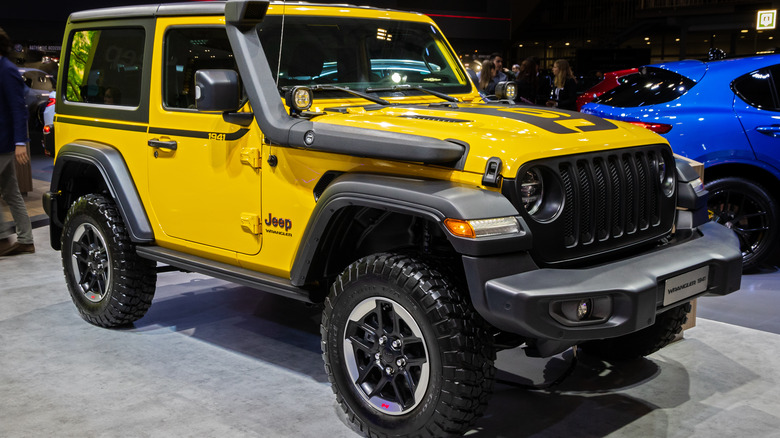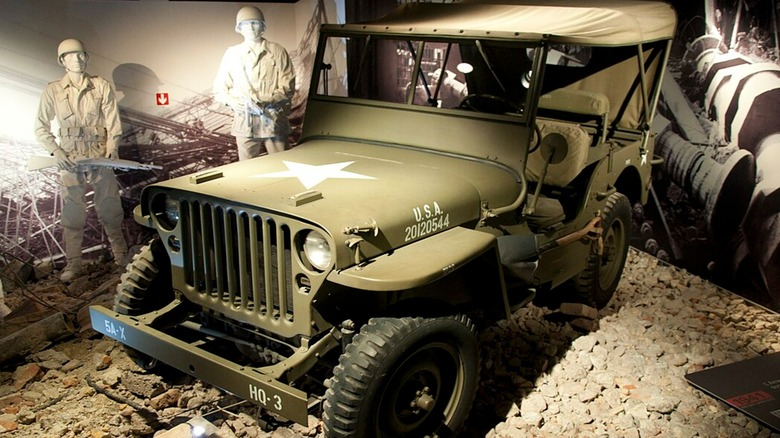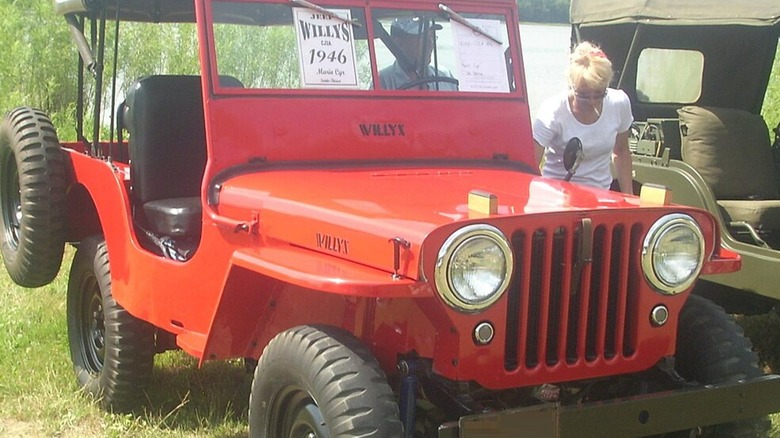Why Is '1941' On Some Jeeps & Why Is The Year Significant For The Brand?
The United States has been an automobile hub since the first big boom in the early 1900s, with various brands pumping out iconic vehicles and becoming the stuff of transportation legend. The likes of Ford and Chevrolet are now recognized as giants in the space, with rich catalogs and no shortage of supporters. Among these prosperous American names is Jeep, which, despite discontinuing some models that deserve a second chance, remains a prevalent name on the roadways in the modern era and is likely to continue building its legacy in the coming decades.
For those who stand by Jeep, taking its modern offerings for a spin is perfectly fine. Drive out anywhere, and you're bound to see a Jeep Grand Cherokee or a Jeep Wrangler constructed in the past few years out and about. However, at the end of the day, Jeep is a brand deeply rooted in its history that dates back to the height of World War II. Thus, the minds behind current-day Jeep products often go out of their way to remind drivers of how far it has come. One way in which this is done is with the addition of the year 1941 on some Jeep models. While it may seem odd for a vehicle produced knee-deep in the 21st century to have 1941 across it, in truth, it makes a ton of sense given Jeep's history.
Jeep got its start back in 1941
The significance of the 1941 on some Jeep models coincides with the start of the brand itself. As the Second World War heated up, the United States government opened the door for 135 automotive manufacturers to bid on a contract with the U.S. Army. The hope was for them to step up and create a line of light reconnaissance vehicles for the war effort per the Army's specific guidelines. Ultimately, Bantam, Willys, and Ford were the only ones to answer the call, though their combined efforts resulted in the world's first Jeep vehicle. With that, World War II laid the groundwork for the modern Jeep empire.
November of 1940 brought with it the completion of the Willys-Overland Quad prototype, setting the stage for the Jeep's grand introduction the following year. The Willys MA arrived in 1941, leading to the innovative Willys MB shortly after. This model was ultimately approved by the Army, and soon enough, Willys-Overland got to work filling its massive order issued by the military branch that July. 16,000 MBs were ordered at a mere $738.74 a piece, being sent all over the world to aid the Allies. Nowadays, the MB and the Jeep brand are synonymous with the conflict and the U.S. military, with 1941 standing as the dawn of the Jeep age.
[Featured image by Rahil Rupawala via Wikimedia Commons | Cropped and scaled | CC BY 2.0]
Jeep didn't become a civilian favorite until 1945
To say that the Willys MB Jeep proved a versatile tool on the battlefield is an understatement. It had speed and handling on its side, could be pulled out of most jams with only a few soldiers around to free it, and could either haul or be equipped with weaponry. Additionally, it could be used to get the wounded out of war zones so they could retrieve crucial treatment. In time, its potential for greatness beyond the battlefield was realized. It may have been created and mass-produced beginning in 1941, but it took a few years for it to make it to the civilian population.
In 1945, the same year that World War II came to an end, the Jeep became available to the general public. The CJ-2A model was advertised to and commonly used by farmers for hauling and general farm labor. This retooling of the MB came with several alterations for civilian use, including improved shocks, more comfortable seats, a tweaked transmission, a reinforced frame, and more. Sales were strong, indicating that there was a need and desire among the masses for Jeep products, so the brand maintained focus on the non-military market. Several cars that are basically Jeep clones arose in later years to get in on the action.
The Jeep may have come from pretty negative circumstances, but it remains a four-wheeled icon nonetheless — one that clearly hasn't forgotten where and when it came from.
[Featured image by Bull-Doser via Wikimedia Commons | Cropped and scaled | CC0 1.0]


